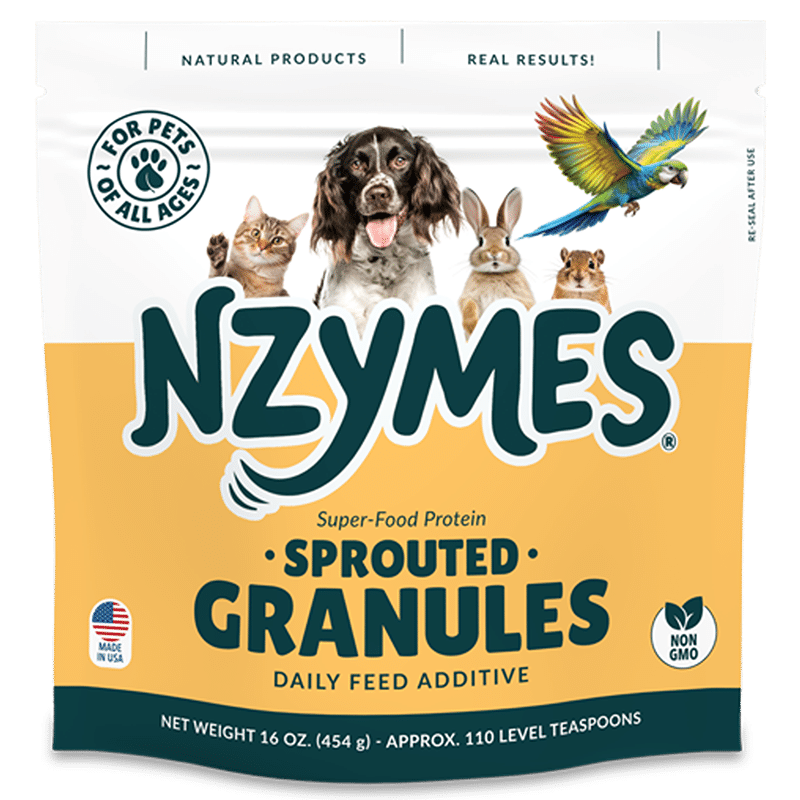
An Overview of Hip Dysplasia in Dogs
Bone Growth Concerns in Dogs
Hip dysplasia in dogs affects a fair percentage of animals. Sometimes referred to as loose hips, this is a developmental malformation or subluxation of the hip joints. Eventually, this condition can develop into arthritic issues. Such dysplasia abnormalities are often genetically inherited or carried over through reproduction as part of the DNA. In giant breeds, many developmental growth abnormalities like PANO, HOD, and OCD are related to poor diets that contribute to muscle laxity during the early months of the dog’s bone growth and muscle development.
Linda Arndt, known as the “Great Dane Lady,” did a 5-year study on large and giant breed bone growth. She discovered that poor quality pet foods focused on too much protein and fat were the main contributors to these problems. Bone growth problems were especially true for those feeding the “Large Breed” puppy foods.

Hip Dysplasia in Dogs, Understanding Diets
Bone growth issues like hip dysplasia in dogs also relate to poor diets during the early development, “the puppy months”. If muscle tone is inadequate or the bone-growth rate surpasses muscle development, the femoral head can pull away from the Joint socket. Referred to as a subluxation, it often leads to abnormal wear and erosion, compounding dysplasia. Such ongoing degradation can result in mild to severe arthritic issues, including pain and inflammatory discomfort for the animal.
The hip joint fits together snugly and smoothly in healthy dogs; see Example of Healthy Dog Hip Joints. In dogs with hip dysplasia however, the head of the femur fits loosely into the pelvis joint, causing excessive rubbing and insecure operation. Thus the term ‘loose hips.’

Hip Conditions Tend to Worsen Over Time
Eventually, the cartilage that protects the joint (and bone) is worn down due to such misalignment, increasing inflammation and pain and leading to limping, lameness or difficulty rising. Severe cases of hip dysplasia can lead to complete loss of mobility in the hind legs.
Current Veterinary theory believes that heredity issues may account for about 25% percent of a dog’s predisposition toward hip dysplasia. But certainly, unbalanced growth factors (associated with incorrect nutrition) can play a significant role in declining hips over time. Other contributing factors to the worsening of the problem include general wear and tear on hips over time, the animal’s diet, weight conditions, activity level, and lastly, the degradation of synovial fluid which provides essential lubrication & cushioning of joints.

Hip dysplasia in dogs is particularly prevalent in the large and giant breeds as well as the fast-growing dog breeds, including Great Danes, Newfoundlands, Rottweilers, Chesapeake Bay Retrievers, Golden Retrievers, Border Collies, and German Shepherds, to name a few.
For More Information About Hip Dysplasia
Hip Dysplasia – the Deeper Details
Canine Dysplasia and Herding Breeds
Dogs Can Still Enjoy a Functional Lifestyle with Hip Dysplasia
Of course the best prevention for ‘developmental’ Hip Dysplasia in dogs focuses on three simple points, through the first year and a half of puppy-hood.
- Good Genetic History
- A Well-balanced Diet
- Slow Growth
Watch these Recovery Videos to see what the body is capable of when it receives a small amount of Super-food nutrition. Choose either Nzymes® super-food supplement, Antioxidant Treats, or Sprouted Granules daily.
For more than 20 years, we here are Nzymes.COM have worked closely with breeders and nutritionists worldwide to help introduce our Nzymes® Super-food products for puppies just after weaning. We support slow growth, even and balanced development in muscle and bone growth. We demonstrate every day that regardless of the cause of the hip dysplasia or how long the dog’s suffering, the difference witnessed in a dog’s life receiving such daily supplementation is nothing less than remarkable.
For pets 10 to 60 pounds, we recommend the Nzymes Antioxidant Treats. For larger dogs or multiple dog families, we suggest the Nzymes Super-food Granules. NOTE: We always suggest to Double or Triple the daily usage amount of Nzymes for any case involving painful joints.
Both products will provide daily resources the body can utilize to help…
- Ease painful inflammation common to dysplasia and arthritis.
- Cleanse the synovial fluid to restore normal lubrication.










